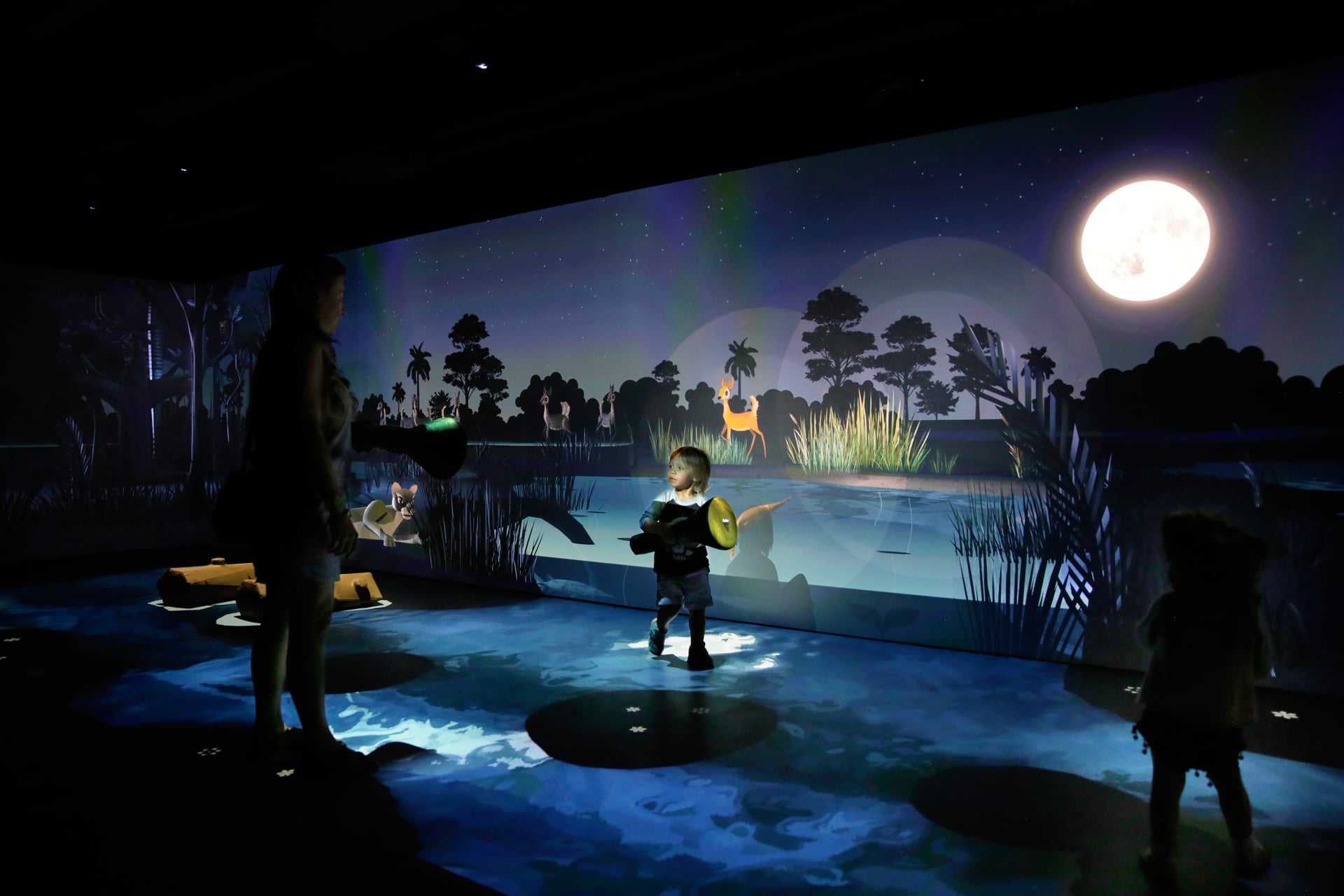In the field of experiential design, the term immersion has become a buzzword. Immersive experiences are popular amongst museum visitors and are seen as more impactful when engaging an audience on a specific topic. But what makes an experience immersive? And how can designers design for immersion? Here are five areas to focus on when designing an immersive visitor experience.

Story first
An engaging and cohesive storyline is the hallmark of immersive design. Humans think and feel with stories. We get immersed by simply listening to an engagingly told story at a campfire or by reading a book. Once we’re tuned in, our brains mirror emotional states of the protagonists. Good storytellers are capable of making us forget our surroundings and feel as if we’re part of the story. Good stories demand our undivided attention.
Multi-sensory Engagement
Immersion works best when we are equally engaged by sight, sound, touch, and – albeit more difficult to design for – smell and taste. A sixth sense, proprioception, the sense of a person’s body in space, is specifically important for spatial immersion. The designer’s toolbox for sensory engagement is ever expanding, providing high-tech solutions for multidirectional and 3D audiovisual displays, haptic experiences, and dynamically generated smells. However, even in absence of the bells and whistles of technology, inventive designers can achieve a lot when approaching low-tech design with a multi-sensory mindset.
Interactivity and Participation
A significant level-up from passive immersive environments are responsive environments. A responsive environment turns empathetic observers into actors by actively engaging their bodies and minds. Video gaming enables significant immersion of players since they are influencing the story through their choices. Museums have long embraced the power of this form of engagement through hands-on activities, interactive displays, digital interfaces, or physical challenges.
Technology Integration
Technology can play an important role in designing for immersion. Virtual reality (VR), augmented reality (AR), and projection mapping are established immersive technologies. Combined with procedural, responsive animations, and various state of the art interfaces such as gesture control, voice recognition, and eye tracking, these technologies enable designers to create dynamic, responsive environments that immerse visitors.
Spatial Design and Theming
Set design or scenography are crucial for immersive design no matter if we’re talking about a physical, digital or mixed reality environment. Look and feel, layout, etc. need to be consistent with the storyline to be effective. Spatial experiences are amongst the most powerful tools for immersion since they call on a multitude of senses. Carefully crafted immersive spaces transport an audience into different worlds or time periods. They use architectural elements, lighting, soundscapes, and other forms of theming to create a sense of place and time, allowing full immersion in the subject matter.
These principles, when applied intentionally, all work together to create immersive visitor experiences. Immersive experiences are more attractive and enjoyable to most visitors, who happily give their undivided attention to these experiences. As a result, they are more engaged in the subject matter, learn and memorise better.
